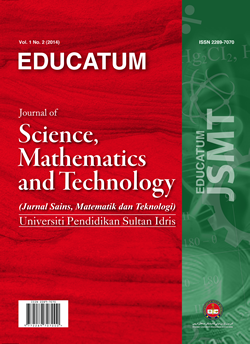Acceptability and Desirability in Making Macaroons Enriched with Coconut Curd (LATIK)
DOI:
https://doi.org/10.37134/ejsmt.vol9.2.12.2022Keywords:
baked-goods, baking industry, production, food development, product innovationAbstract
The baking industry in the Philippines is vast. The demand for baked goods has developed and evolved into a huge sector, opening up and providing more business and job options. Baked goods have become a regular component of the diet, with some serving them as dessert-like macaroons. The study investigated another food item as an option in generating a product with nutritional value and health advantages; it may also be a great aid to the community to use the availability of products to earn more money and give a better product to the public. However, this is also in reaction to the Department of Science and Technology's initiative (DOST). The experimental research design underpins the study. The experimental design theory is based on assessing the connections between and among variables; in general, one variable, the independent variable. The purpose of this study was to make macaroons with coconut curd (latik) and determine the level of acceptance and attractiveness of the macaroons with coconut curd (latik) in Bugallon Proper, Ramon, Isabela. The Independent Variable-Dependent Variable (ID) model was used as the assessment model in this study. The mean was used to establish the attractiveness of macaroons supplemented with coconut curd (latik) in terms of sensory value and acceptability, and the Wilcoxon Signed Test was used to determine the significant difference between varied quantities of the components. The macaroons supplemented with coconut curd (latik) were found to be attractive and highly praised by the responders. Treatment 2 received the highest mean and best quality ratings from the three groups of responders in terms of sensory acceptance. There is, however, a considerable variation in how responders rate the texture of treatments 2 and 3.
Downloads
References
Belorio, M., Sahagún, M., & Gómez, M. (2019). Influence of flour particle size distribution on the quality of maize gluten-free cookies. Foods, 8(2), 83.
Braz J. (2015). Med Biol Residence Utilization of Coconut Curds in the Locality. 48(11): 953–964
Bresciani, A., & Marti, A. (2019). Using pulses in baked products: Lights, shadows, and potential solutions. Foods, 8(10), 451.
Capriles, V. D., & Arêas, J. A. (2013). Effects of prebiotic inulin-type fructans on structure, quality, sensory acceptance and glycemic response of gluten-free breads. Food & Function, 4(1), 104-110.
Cauvain, S. P., & Clark, R. H. (2019). Baking technology and nutrition: towards a healthier world. John Wiley & Sons.
Challacombe, C. A., Seetharaman, K., & Duizer, L. M. (2011). Sensory characteristics and consumer acceptance of bread and cracker products made from red or white wheat. Journal of Food Science, 76(5), S337-S346.
Chomchalow, N. (2013). Curd coconut: Its mystery and potentialities. Cord, 29(2), 6-6.
Digiorgio, M. 2019 Consumer trends every bakery business needs to know. Harvest Food Solutions. https://harvestfoodsolutions.com/consumer-trends-every-bakery-business-needs-to-know/
Doménech-Asensi, G., Merola, N., López-Fernández, A., Ros-Berruezo, G., & Frontela-Saseta, C. (2016). Influence of the reformulation of ingredients in bakery products on healthy characteristics and acceptability of consumers. International journal of food sciences and nutrition, 67(1), 74-82.
Foale, M. (2014). Australian Contributions to Coconut (Cocos nucifera L.) Research (A Review Article). CORD, 30(1), 7-7.
Gao, J., Brennan, M. A., Mason, S. L., & Brennan, C. S. (2017). Effects of sugar substitution with Stevianna on the sensory characteristics of muffins. Journal of Food Quality, 2017.
Grasso, S., Omoarukhe, E., Wen, X., Papoutsis, K., & Methven, L. (2019). The use of upcycled defatted sunflower seed flour as a functional ingredient in biscuits. Foods, 8(8), 305.
Doménech-Asensi, G., Merola, N., López-Fernández, A., Ros-Berruezo, G., & Frontela-Saseta, C. (2016). Influence of the reformulation of ingredients in bakery products on healthy characteristics and acceptability of consumers. International journal of food sciences and nutrition, 67(1), 74-82.
Estacion, A. B. A., Gamalong, M. B., Anos, D. R., Calpe, M., Proximo, M. C., & Paul Vincent SD Quinto, L. P. T. (2019). A feasibility study on the establishment of vege macaroons (Eatwork) in glori novaliches. Ascendens Asia Singapore–Bestlink College of the Philippines Journal of Multidisciplinary Research, 1(1).
Estal, B. R. (2014). Pricing movements of copra in the Philippines. Handbook on the Emerging Trends in Scientific Research, 527-534.
Javier, E. Q. (2015). Modernization of the coconut industry. National Academy of Science and Technology: NAST Bulletin, (8).
Lima, E. B. C., Sousa, C. N. S., Meneses, L. N., Ximenes, N. C., Santos, M. A., Vasconcelos, G. S., & Vasconcelos, S. M. M. (2015). Cocos nucifera (L.)(Arecaceae): A phytochemical and pharmacological review. Brazilian Journal of Medical and Biological Research, 48, 953-964.
Martinez, M. M., & Gomez, M. (2019). Current trends in the realm of baking: When Indulgent consumers demand healthy sustainable foods.
Miranti, M. G., & Wahini, M. (2021, March). Nutritional value and consumer acceptability of biscotti made from rambutan seed flour. In IOP Conference Series: Earth and Environmental Science (Vol. 709, No. 1, p. 012036). IOP Publishing.
Palczak, J., Giboreau, A., Rogeaux, M., & Delarue, J. (2020). How do pastry and culinary chefs design sensory complexity? International Journal of Gastronomy and Food Science, 19, 100182.
Peris, M., Rubio-Arraez, S., Castelló, M. L., & Ortolá, M. D. (2019). From the laboratory to the kitchen: New alternatives to healthier bakery products. Foods, 8(12), 660.
Pister, J. A brief history of macaroons. COR https://cor.ca/view/442/a_brief_history_of_macaroons.html.
Pobar, R. A. (2018). Utilization of atis annona squamosa linn desserts. International Journal of Environmental and Rural Development, 9(2), 102-107.
Respicio, Ma. Theresa (2020). Acceptability and Marketability of banana blossom, corn silk and bougainvillea as ingredients in making macaroons.
Rosell, C. M., & Garzon, R. (2015). Chemical composition of bakery products. Handbook of Food Chemistry, 191-224.
San Gabriel, S. M., & Figueras, E. D. (2014). The Science Behind Patisserie.
Tate & Tyle, (n.d.) https://www.tateandlyle.com/our-expertise/bakery-and-snacks
2013 Annual Survey of Philippine Business and Industry (ASPBI) https://psa.gov.ph/content/2013-annual-survey-philippine-business-and-industry-aspbi-manufacturing-sector-final-results?msclkid=8d63f5c5ba2611ec8b335509624de3d5
Downloads
Published
How to Cite
Issue
Section
License
Copyright (c) 2022 Macario Q. Jr Tamundong, Patricia A. Aliguyon

This work is licensed under a Creative Commons Attribution-NonCommercial-ShareAlike 4.0 International License.





